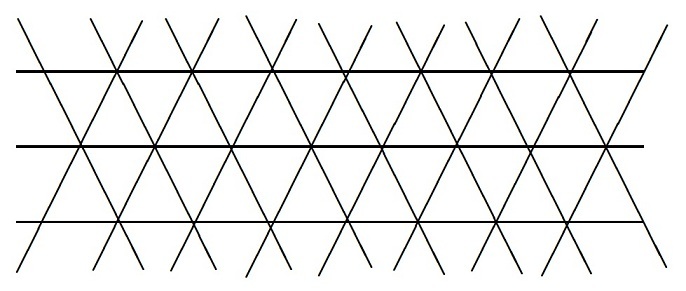Mouse and sweets
An infinite two-dimensional pattern is indicated below.

The smallest closed figure made by the lines is called a unit triangle. Within every unit triangle, there is a mouse. At every vertex there is a sweet. What is the average number of sweets per mouse?
This section requires Javascript.
You are seeing this because something didn't load right. We suggest you, (a) try
refreshing the page, (b) enabling javascript if it is disabled on your browser and,
finally, (c)
loading the
non-javascript version of this page
. We're sorry about the hassle.


There are couple of ways to arrive at the answer.
#1
Every mouse is next to 3 sweets, but every sweet is next to 6 mice.
#2
A small portion of one such possible division is pictured on the left. Each colored section contains two (very round) mice but only one sweet (invisible at the intersection of the lines).